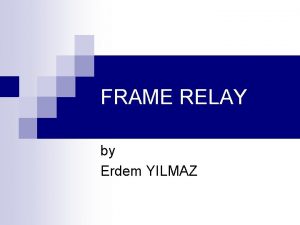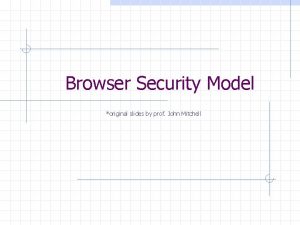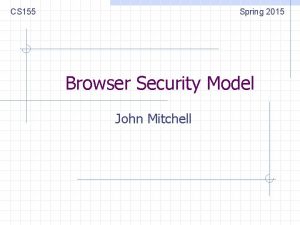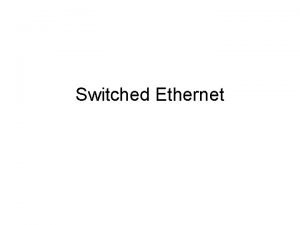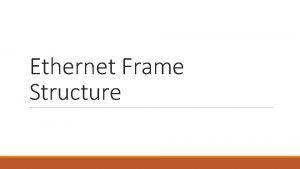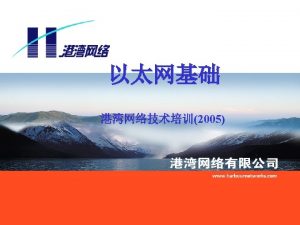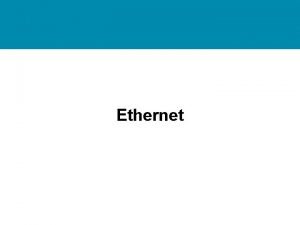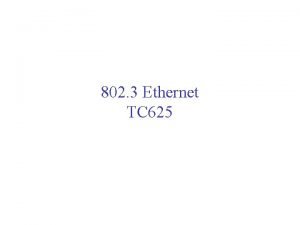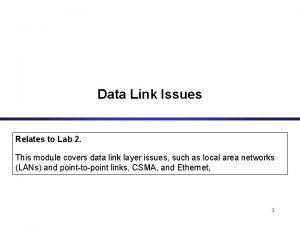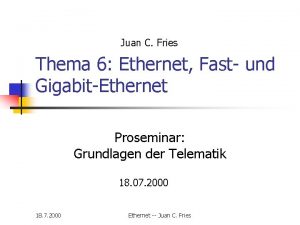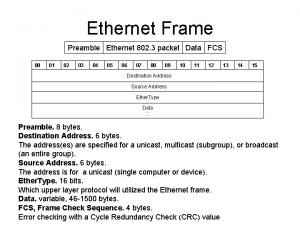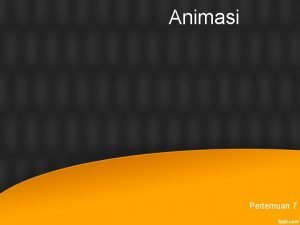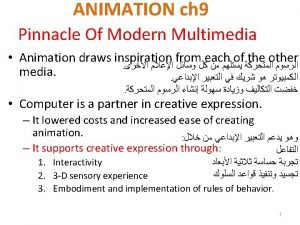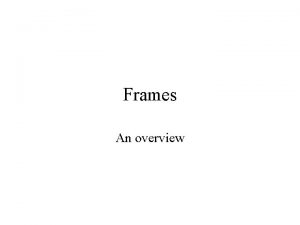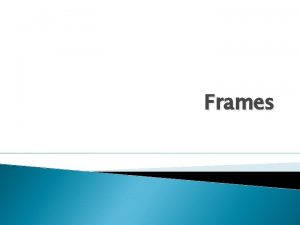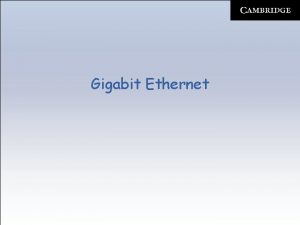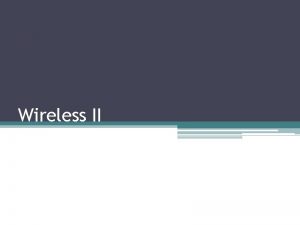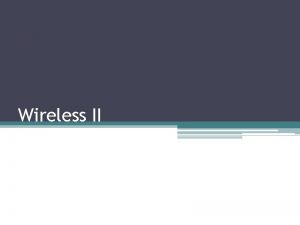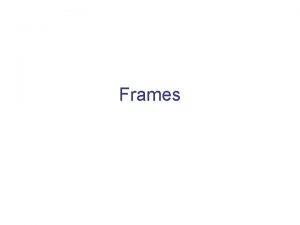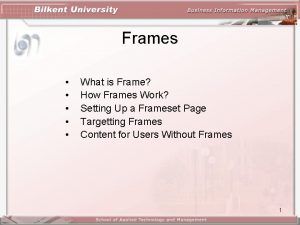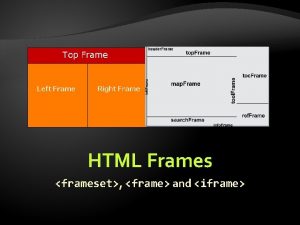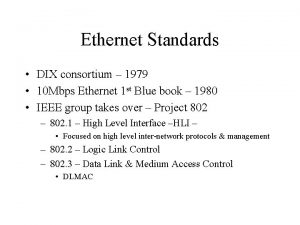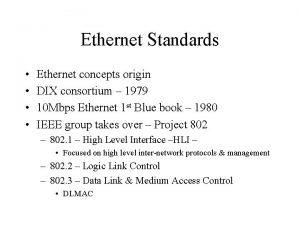Ethernet Frames Ethernet II frame format DIX IEEE














- Slides: 14

Ethernet Frames • Ethernet II frame format – DIX • IEEE 802. 3 Frame – Takes an 802. 2 (LLC)frame

IEEE 802. 3 Frames

Ethernet Frames • IEEE 802. 2 Frame – Logic link control – part HDLC functions • Any logical addressing • Control information • Data encapsulation – Common to all 802 MAC protocols

Ethernet Frames • IEEE 802. 2 Frame - LLC – DSAP – Destination Service Access Point – Identifies protocol stack on the receiving sys – 1 byte – 1 st bit • 0 - individual • 1 group

Ethernet Frames • IEEE 802. 2 Frame - LLC – SSAP – Source Service Access Point – Identifies protocol stack on the sending sys – 1 byte – 1 st bit • 0 - command • 1 - response

Ethernet Frames • IEEE 802. 2 Frame - LLC – Control field • I frame – information • S frame – supervisory • U frame – unnumbered frame

100 Base standards • 802. 3 u task force – 100 Mbps, same Ethernet MAC – use CAT 5 • 802. 12 - Demand Priority Access Method – Use CAT 3 • Both accepted officially June 1995 • 802. 3 u popular – 100 Base. T or Fast Ethernet

100 Base T • 10 Base T collision domain – 2500 mts at 10 Mbps – Collision sensing time = 512 bit period – Smallest frame size • 100 Base T – collision domain?

100 Base T • 100 Base T – features – No change in the frame format – No change in the access method – full duplex – Access rate changed – Collision domain changed – Data rate greater 10 times, collision decreased by 10 times

100 Base T – physical layer • Star topology • Two Specs – 100 Base X – PCS – PMA – 2 cables – 100 Base T 4 – • Four UTP cables – CAT 3 – voice grade • To get reduced baud rate for a given bit rate 8 B/6 T encoding was used (10 Base T used 4 B/5 B encoding)

10 Base T – > 100 Base T • 802. 3 u committee specifications – Seamless integration with installed base – Order of two times the 10 Base. T cost (or less) – Increased aggregate bandwidth – Be standardized and supported by multiple vendors – Solution to time bound delivery

100 Base T • Auto – negotiation – Speed adjustment among devices – Allows negotiation on optimal mode between systems • Half duplex (csma/cd) • Full duplex • RS, MII, auto negotiation - Full duplex aware

Flow control • Special MAC frame – PAUSE • Turn-off the transmitter • Suitable only on point-to-point links between transmitting and receiving stations • Pause ‘Time’ information sent • End of timer – transmitter can start sending

PAUSE Frame • DA – globally unique – 01 -80 -c 2 -00 -00 -01 • Type field – 88 -08 • 2 byte timer field – in 512 bit times • Full duplex – derivative of switched Ethernet • Distance limitation due to collision domain removed
 Ethernet frame format
Ethernet frame format Frame relay frame format
Frame relay frame format Frame relay frame format
Frame relay frame format Cookies frames and frame busting
Cookies frames and frame busting Cookies frames and frame busting
Cookies frames and frame busting Switched ethernet vs shared ethernet
Switched ethernet vs shared ethernet Preamble in frame
Preamble in frame Ethernet frame sfd
Ethernet frame sfd Ethernet frame structure
Ethernet frame structure Ethernet frame layout
Ethernet frame layout Ethernet ii frame fields
Ethernet ii frame fields Ethernet frame aufbau
Ethernet frame aufbau Ethernet frame preamble
Ethernet frame preamble Pengertian animasi frame by frame
Pengertian animasi frame by frame Frame by frame animation programs
Frame by frame animation programs


